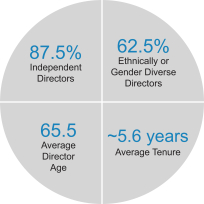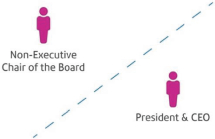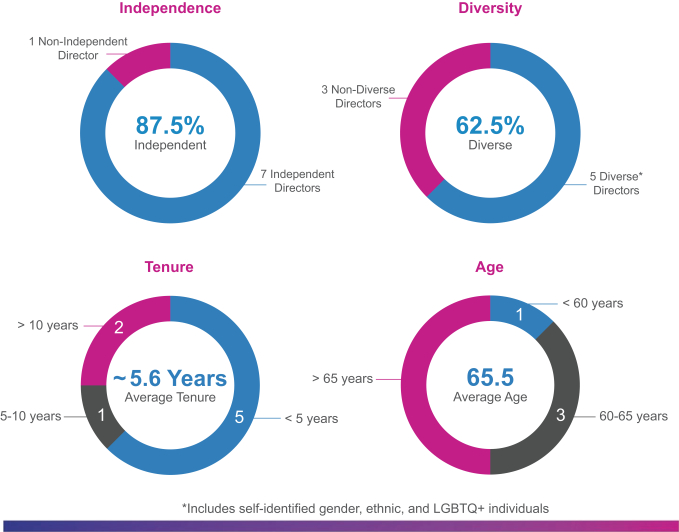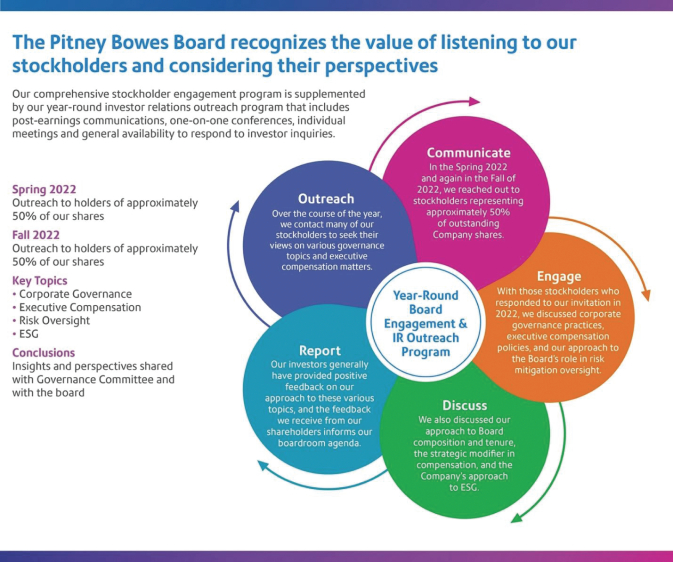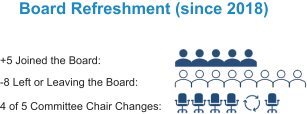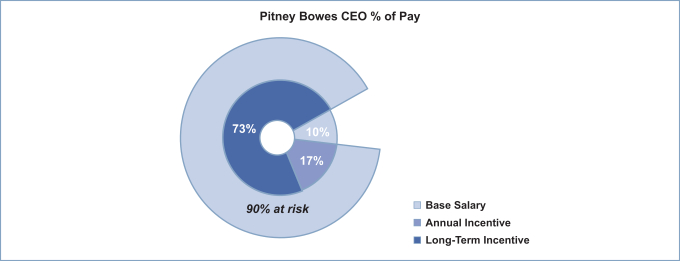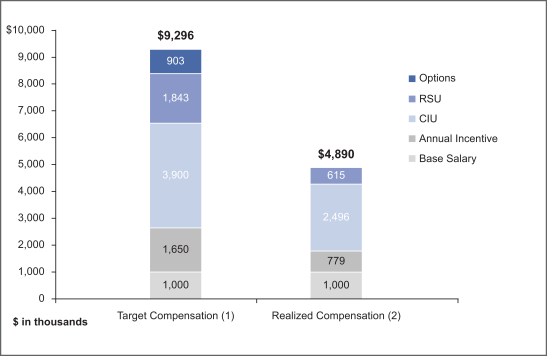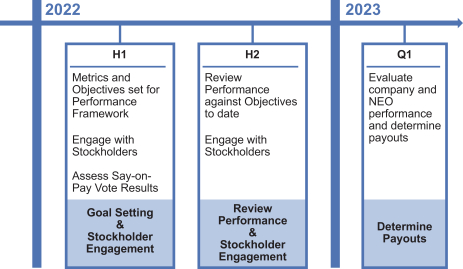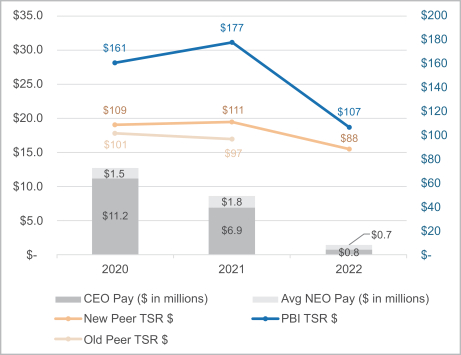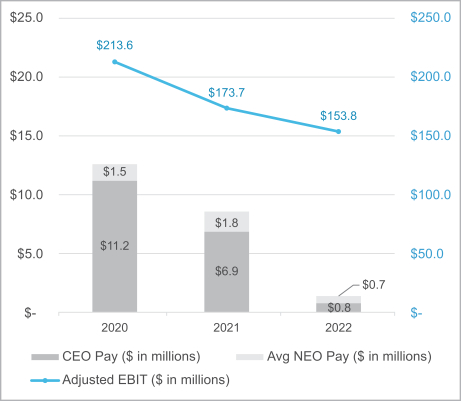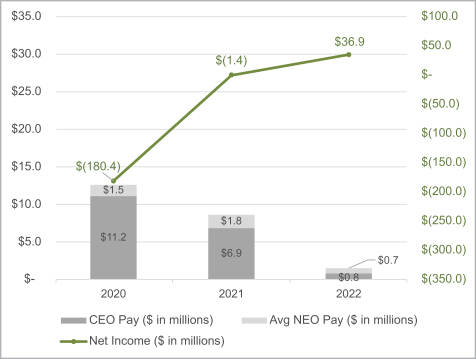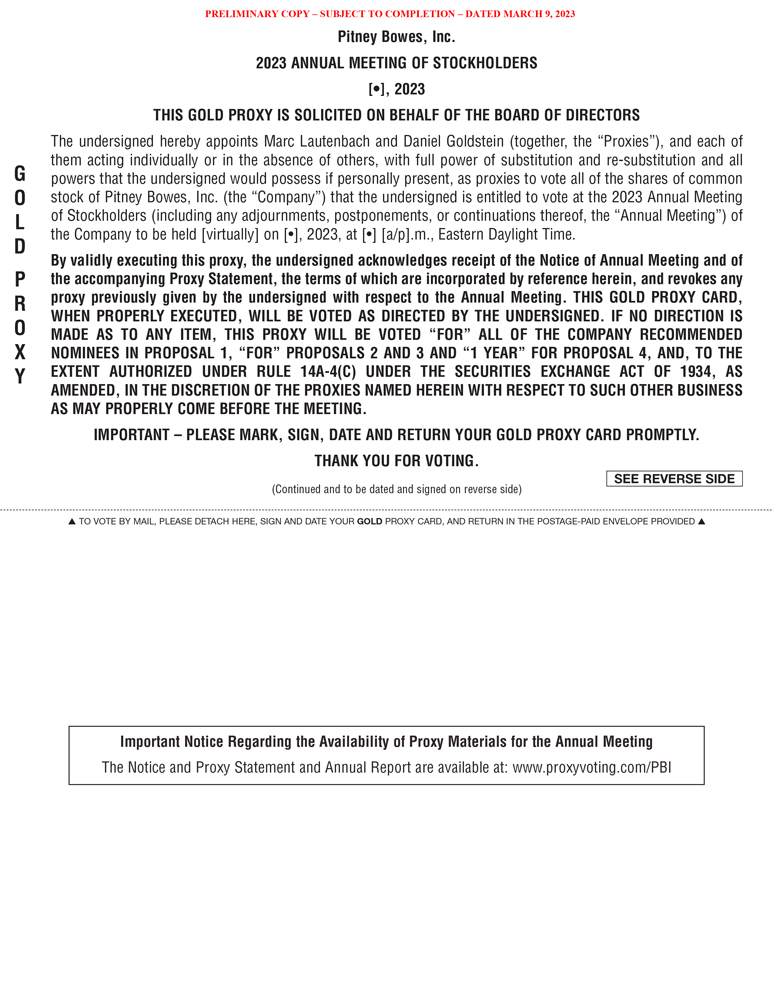Determination of the Shares Available and Award Limits under the Plan
|
The Committee consulted Pay Governance LLC, its independent compensation advisor, in examining a number of factors, including dilution and burn rate. The Committee considered these and other factors in reaching its decision on the total number of shares to authorize under the Plan.
If the amendment and restatement of the Plan is approved, a maximum of 13,856,494 shares, including the 5,000,000 additional shares sought in this amendment, (subject to adjustment as described below) will be available for issuance under the Plan for PSUs, RSUs, stock options, SARs, restricted stock and any other type of stock-based awards issued under the Plan. In addition to the numberadvisory vote to approve executive compensation in Proposal 3 above, the Dodd-Frank Act also enables our stockholders to express their preference for having a “say-on-pay” vote every one, two or three years, or to abstain. This advisory (non-binding) “frequency” vote is required once every six years beginning with the 2011 annual meeting.After careful consideration and in accordance with feedback received by our investor outreach, the Board has determined that holding an advisory vote to approve executive compensation every year is the most appropriate policy for the Company at this time and recommends that stockholders vote for future advisory votes to approve executive compensation to occur every year.
While our executive compensation program is designed to promote a long-term connection between pay and performance, the Board recognizes that executive compensation disclosures are made annually. Holding an annual advisory vote to approve executive compensation provides the Board with more direct and immediate feedback on our compensation program. However, stockholders should note that because the advisory vote to approve executive compensation occurs well after the beginning of shares describedthe compensation year, and because the different elements of our executive compensation program are designed to operate in an integrated manner and to complement one another, in many cases it may not be appropriate or feasible to change our executive compensation program in consideration of any one year’s advisory vote to approve executive compensation by the time of the following year’s annual meeting of stockholders. For your information, when we last presented this proposal to stockholders in 2017, of those who voted, 85% voted for an annual frequency.
We understand that our stockholders may have different views as to what is an appropriate frequency for advisory votes to approve executive compensation, and we will carefully review the voting results on this proposal. Stockholders will be able to specify one of four choices for this proposal on the proxy card: every year, every two years, every three years, or abstain. (Stockholders are not voting to approve or disapprove the Board’s recommendation.)
This advisory vote on the frequency of future advisory votes to approve executive compensation is non-binding on the Board. Notwithstanding the recommendation of the Board and the outcome of the stockholder vote, the Board may in the preceding sentence, any shares associatedfuture decide to conduct advisory votes on a more or less frequent basis and may vary its practice based on factors such as discussions with outstanding awards understockholders and the Plan, oradoption of material changes to the Prior Plans (defined below) as of May 2, 2022 (“Prior Plan Awards”) that on or after such date cease for any reason to be subject to such awards (other than by reason of exercise or settlementcompensation program.
Vote Required; Recommendation of the awardsBoard of Directors
The vote on the frequency of future advisory votes to the extent they are exercised for or settled in vested and non-forfeitable shares) will also be available for issuance under the amended and restated Plan (collectively, the “Plan Maximum”). “Prior Plans” means the Pitney Bowes Inc. 2007 Stock Planapprove executive compensation is an advisory vote and the Pitney Bowes Inc. 2013 Stock Plan. Any shares issued under stock options or SARs granted under the Plan will be counted against the Plan Maximum on a one-for-one (1:1) basis and any shares issued pursuant to awards granted under the Plan other than stock options or SARs will be counted against the Plan Maximum as 2.0 shares for every one (1) share subject to such award. Prior Plan Awards that are added to the Plan Maximum will be added as one (1) share if such shares were subject to options or SARs, and as 2.0 shares if such shares were subject to awards other than options or SARs. An employee may receive multiple awards under the Plan.
Awards covering a maximum of 2,000,000 shares (not counting tandem SARs) may be granted under the Plan to any individual during any calendar year.
Shares delivered under the Plan will be authorized but unissued shares of Pitney Bowes common stock, treasury shares or shares purchased in the open market or otherwise. To the extent that any award under the Plan or the Prior Plans payable in shares is forfeited, cancelled, returned to the company for failure to satisfy vesting requirements or upon the occurrence of other forfeiture events, or otherwise terminates without payment being made in shares, the shares covered thereby will no longer be charged against the maximum share limitation and may again be made subject to awards under the Plan. Any awards settled in cashresults will not be counted againstbinding on the maximum share reserve underBoard or the Plan. However, any shares exchanged by an employee or withheld from an employee as full or partial payment to the companyCompany. The affirmative vote of the exercise price ormajority of votes cast will constitute the tax withholding upon exercise or settlement of an award, unissued shares resulting from the settlement of SARs in stock or net settlement of a stock option, and shares repurchased on the open market with the proceeds of an option exercise will not be returned to the number of shares available for issuance under the Plan.
The board believes that the 13,856,494 shares that would be available for issuance under the Plan provides us with the ability to grant meaningful incentives for employees to increase the value of the company for all stockholders. Based on our past experience, we believe the 13,856,494 shares will provide us an opportunity to grant equity awards for approximately one to two years, due to the fungible plan design and expected LTI award mix, before we would need to seek stockholderstockholders’ non-binding approval of more shares. In order to determine the number of shares to be authorized under the Plan, the Committee and the board considered the need for the shares and the potential dilution that awarding the requested shares may have on current stockholders.
In considering the cumulative dilutive impact of the equity program, the Committee considered the dilution impact of previously issued awards. Included in the equity dilution calculation are options with exercise prices greater than the current share price. “Full Dilution” is defined as:
outstanding stock options, plus
outstanding full value awards, such as RSUs and PSUs, plus
the number of shares available for future grants under our 2014 Directors’ Plan and the proposed amended and restated Plan. The 2014 Director Plan does not have its own share reserve, but rather shares granted from the 2014 Director Plan are being drawn from the 2018 Plan.
collectively divided by:
○ | 174,115,115 (the estimated total outstanding shares of common stock as of February 17, 2022) plus all shares in the numerator |
After the February 2022 grant, which utilized approximately 9,474,952 fungible shares, as of February 17, 2022 there is a balance of 8,856,494 shares available for issuance under the Plan. The potential equity dilution from all stock incentives granted and available to employees and directors would be approximately 14.61% as of February 17, 2022.






